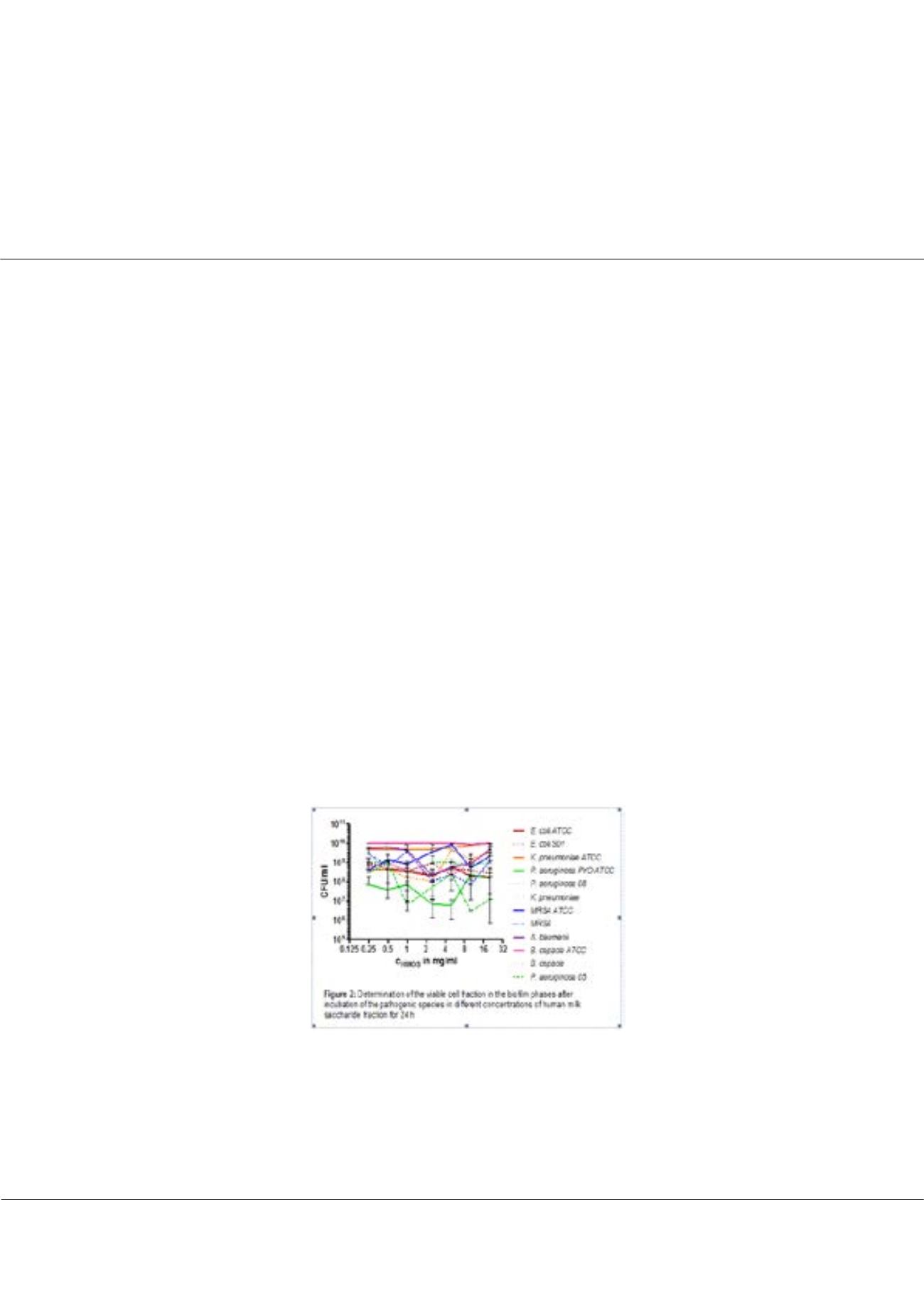

Page 56
conferenceseries
.com
Volume 8
Journal of Biotechnology & Biomaterials
ISSN: 2155-952X
Pharma Biotech 2018
December 10-11, 2018
December 10-11, 2018 | Rome, Italy
23
rd
International Conference on
Pharmaceutical Biotechnology
Antibiofilm activity of Human Milk Oligosaccharides against matured biofilms formed by different
pathogen species
Sylwia Jarzynka
1
, Kamila Strom
1
, Oliwia Makarewicz
2
and
Gabriela Oledzka
1
1
Medical University of Warsaw, Poland
2
Jena University Hospital, Germany
Statement of the Problem:
Due to its unique composition, human milk is an excellent source of nutrients and also many
bioactive ingredients, which have as a potential healthy effect. Oligosaccharides (HMOs, Human Milk Oligosaccharides) is the
main group with potential biocidal using, especially of medical procedures. Due to the concentration of the components of
humanmilk, oligosaccharides, in addition to lactose and fats, are the third component. Due to their bioactivity, we hypothesised
that HMOs exhibit an antimicrobial activity against a wide spectrum of human pathogenic bacteria. A systematic investigation
of the antimicrobial spectrum of polled or individual HMOs has not been performed for bacterial biofilm structure.
Methodology & Theoretical Orientation:
Clinical isolates and reference strains of
Escherichia coli
,
Pseudomonas aeruginosa
,
Klebsiella pneumoniae, MRSA, Burkholderia cepacia
and
Acinetobacter baumanii
were used in this study. Human milk was
obtained fromnine healthy donors fromHumanMilk Bank inWarsaw Poland. Milk samples were pooled, next in the skimming
milk proteins were precipitated. Carbohydrates with oligosaccharides fraction were then lyophilized. In the quantitative
analysis of the biofilm we done determination of the minimal biofilm inhibitory concentration (MBIC), determination of
colony forming units in the planktonic phase and of the minimal biofilm eradicated concentration (MBEC). Live/dead staining
of the biofilms and CLSM image acquisition were used.
Conclusion & Significance:
In our preliminary work, we could show that the human milk saccharide fraction exhibit
moderately activity against some planktonic bacteria species (e.g. clinical isolates of
P. aeruginosa
and
MRSA
) and inhibit
biofilm formation of
P. aeruginosa
. HMOs showed a biofilm eradicating effect on most tested pathogens. Oligosaccharides may
potentially constitute a new medicinal product of natural origin, used in the prophylaxis and treatment of respiratory tract
infections in patients with cystic fibrosis and COPD.
Recent Publications:
1. Ackerman, D. L., et al. (2017). Human Milk Oligosaccharides Exhibit Antimicrobial and Antibiofilm Properties
against Group B Streptococcus. ACS Infect Dis 3(8): 595-605.
2. Bode, L. (2015). The functional biology of human milk oligosaccharides. Early Hum Dev 91(11): 619-622.
Sylwia Jarzynka et al., J Biotechnol Biomater 2018, Volume 8
DOI: 10.4172/2155-952X-C8-110


















